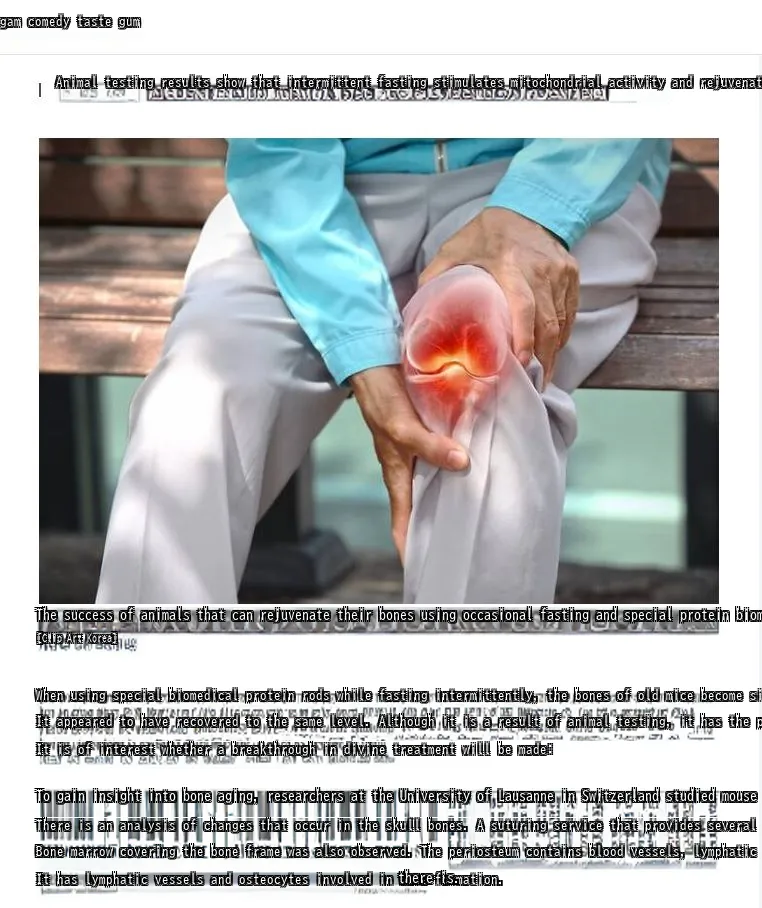
image text translation
gam comedy taste gum
Animal testing results show that intermittent fasting stimulates mitochondrial activity and rejuvenates age-related osteoprogenitor cells.
The success of animals that can rejuvenate their bones using occasional fasting and special protein biomedical rods is attracting attention [Photo =
[Clip Art Korea]
When using special biomedical protein rods while fasting intermittently, the bones of old mice become similar to those of young mice.
It appeared to have recovered to the same level. Although it is a result of animal testing, it has the potential to rejuvenate the bones of geriatric patients.
It is of interest whether a breakthrough in divine treatment will be made:
To gain insight into bone aging, researchers at the University of Lausanne in Switzerland studied mouse models most vulnerable to aging.
There is an analysis of changes that occur in the skull bones. A suturing service that provides several pieces of skull frame.
Bone marrow covering the bone frame was also observed. The periosteum contains blood vessels, lymphatic vessels, and sensory nerves.
It has lymphatic vessels and osteocytes involved in bone formation.
there is.
The researchers found that both bone structure and healing capacity decline significantly as mice age.
image text translation
C: From adulthood, the thickness of the periosteum does not decrease. Aging primary bioenergetic pathways, especially the mitochondrion
Ah, there are no functions. These changes result in osteoprogenitor cells (stem cells that play an important role in bone formation and repair).
This type of bone decreases and its function deteriorates, weakening the ability to restore bone health.
Research Forest is developing Wn, a biomedical device that delivers the Wnt3a protein, which is important in regulating the bone progenitor cell framework.
An attempt was made to increase the number of osteoprogenitor cells in older subjects using the t3a rod template. bone progenitor cells
Although the number has increased, the healing ability has not recovered.
Research Forest combined intermittent fasting with Wnt3a therapy in old mice with bone defects. liver
Iron fasting has been shown to increase bone density in adult animals.
Old mice recover their bones to a level similar to that of much younger mice. Occasional fasting is a mitochondrial
It accelerates activity and reduces stress on aging-related cells, rejuvenating bone progenitor cells.
In addition, changes in the intestinal microbial community, especially a strain called Akkermansia muciniphila,
As teria increased, it played an important role in tissue health and recovery. How can this change in diet affect bone health?
It gives the appearance of being crazy.
Soukri Habib, professor of biomedical sciences at the University of Lausanne, said, “Improving the intestinal microflora can help reverse aging tissue.”
“It shows that it can be done,” he said, adding, “Even aging tissue has the potential to restore health.”
said.
The study was published in the journal ‘eLife’ under the title ‘Rejuvenating aged osteoprogenitors for bone repair’.
It’s neat.
So far, only one experiment has been successful and research is underway.
Until complete research is completed and definitive verification is made,
It should not be regarded as knowledge to be blindly trusted.